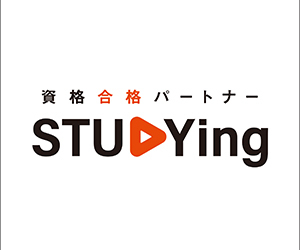第100回:「倒置」を使って表すことの出来る表現とは。

今回で、上級編の内容も最終回です。
これまでの知識を、実際の場面で使えるようになった時には、英語力はネイティブレベルになっていることでしょう。
[広告]
確かな英語力は、日々の継続から。
その継続を後押しする、第二言語習得理論に基づいた
オンライン英語学習プログラムがあります。
英語を使う人のための、確実なスキルアップが望める
7日間の無料体験はこちらから!

“倒置法: Inversionの使い方(パート2)”
前回の記事では、倒置法(Inversion)の基本的な使い方について解説しました。今回は、ネガティブな副詞や特定の表現の後における倒置法の使い方に焦点を当てます。
セクション1: ネガティブな副詞句の後の倒置法
- フォーマルな文や文学的な表現では、文の先頭にネガティブな副詞句を置くことがあります。
- 主語と第一助動詞が逆になり、”do”が単純な時制の動詞と共に使用されます。代表的なネガティブな時間副詞句としては、never(以前には)、rarely、seldom、barely/hardly/scarcely… when/before、no sooner… than などがあります。
セクション2: “only”や”not”を含む表現の後の倒置法
- “only”と時間表現、”only”と前置詞句(”only by…”, “only in…”, “only with…”など)の組み合わせでは、倒置法が使用されます。
- “not…”との組み合わせや”not only”、”not until”、”not since”、”not for one moment”といった表現の後にも倒置法が使われます。
セクション3: “so + adjective… that”や”such + be… that”の後の倒置法
- 文の先頭に”so + adjective”を置くことで、形容詞に強調を与えることができます。この場合も、主語と第一助動詞が逆になり、”do”が単純な時制の動詞と共に使用されます。
- “such + be”を文の先頭に置くことで、何かの程度や度合いを強調することができます。
セクション4: “neither…/nor…”の後の倒置法
- “neither”や”nor”で始まる節は、前の否定的な節や文に対する追加の否定を導入する際に使用されます。
- “Neither/Nor do I”や”So do I”といった表現でも倒置法が使用されます。
具体例
- Inversion after negative adverbials:
- Never had I seen such a beautiful sunset before.
- Barely had the concert started when the power went out.
- Only after she finished her presentation did she realize she had made a mistake.
- Only by working overtime could they meet the deadline.
- At no time did I doubt her abilities.
- Not until I read the book did I understand its true meaning.
- Little did they know that their lives were about to change forever.
- Not a single word had he spoken since the argument started.
- Only when they win the championship will they receive the trophy.
- Not until the rain stopped did they venture outside.
- Inversion after so + adjective… that; such + be… that; neither…/nor…
- So excited was the child that he couldn’t sleep the night before his birthday.
- So difficult was the exam that many students failed to pass.
- Such was the impact of the speech that it brought the audience to tears.
- Such was the power of her voice that it filled the entire auditorium.
- Neither did she like coffee, nor did she enjoy tea.
- Neither had they expected such a turn of events, nor were they prepared for it.
- So do I, said John when his friend expressed his love for chocolate.
- So does she, replied Sarah, when her colleague mentioned their shared interest in photography.
Please note that these examples are created to illustrate the usage of inversion and may not reflect real-life situations or events.
[広告]
TOEICのスコアを上げたいけれど、
まとまった勉強時間が取れなくて困っている…
なら、細かいスキマの時間を使いながら、
少しずつスキルを積み重ねてみてはどうでしょう。
スマホ1つでスコアアップが出来る、
オンライン講座のリンクはこちらから。

Q. この文法はどうやって使うのでしょうか?
A. 今回の文法を活用した会話文を見てみましょう。

Little did I know that this journey would change my life forever.
(この旅が私の人生を変えるとは、まったく知らなかったんだよ。)

Only when you experience it yourself will you understand the beauty of this place.
(自分自身で経験しない限り、この場所の美しさを理解することはできないんだよ。)
[広告]
ロゼッタストーン・ラーニングセンターで、最先端の教育制度を活用して英語を学びませんか?私たちは個々の学習ペースに合わせてeラーニングと対面教育を組み合わせ、柔軟な学習環境を提供しています。自宅でのeラーニングと対面教育のメリットを最大限に活かし、あなたの英語学習をサポートします。最新のテクノロジーと個別の指導が組み合わさった当センターで、自由な学習スタイルを体験してみませんか?英語学習を楽しく効果的に進めるための環境がここにあります。新たな一歩を踏み出して、新しい英語学習の旅に参加しましょう!

Q. この記事の要点は?
A. 倒置を使った表現の確認を行いました。
- Inversion after negative adverbials:
- Negative adverbials, such as never, rarely, seldom, barely/hardly/scarcely… when/before, no sooner… than, are placed at the beginning of a clause.
- Subject and first auxiliary are inverted, and “do” is used with a simple tense verb.
- Expressions with “only” + time expression, prepositional phrases, expressions with “not,” and “little” can also cause inversion.
- Clauses beginning with “only after/if/when” or “not until” can also result in inversion.
- Inversion after “so + adjective… that”; “such + be… that”; “neither…/nor…”:
- “So + adjective” is used at the beginning of a clause to emphasize the adjective.
- Inversion occurs, and “do” is used with a simple tense verb.
- “Such + be” is used to emphasize the extent or degree of something.
- Inversion is used after “neither” and “nor” when they introduce a negative addition to a previous negative clause or sentence.
- Inversion is also used in expressions like “Neither/Nor do I,” “Neither/Nor does Diane,” and “So do I,” “So does Maya.”
Note: Inversion is a grammatical structure used for emphasis and is more commonly found in formal and literary language.
英会話を始めてみたいけれど、どのサービスが良いか分からない…
そんな方は、まず、この記事で3つのサービスを比べてみてはいかがでしょうか?
英語力を効率良く伸ばすことができるサービス3選です。

この記事を作る際に参考にした文法の解説書になります。
すべて英語で書かれていますが、練習問題が付いてます。
イギリス英語なので、スペル等の表記が異なる部分もありますが、
「使い方を練習したい」「繰り返し問題を解きたい」
という方は、使ってみても良いかもしれません。

関連記事一覧
他の文法解説記事を検索できます。






-320x180.jpg)





コメント